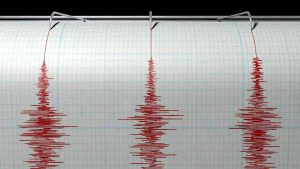
Researchers reexamining historical seismograms from the 1906 Meishan earthquake have uncovered a new mechanism for the quake, one of the deadliest to ever strike Taiwan.
The new mechanism provides a better fit for the fault rupture expected from the magnitude 7.1. earthquake, as well as a better fit for the distribution of recorded damage and aftershocks, according to the report in the journal Seismological Research Letters.
The findings will help seismologists improve their understanding of the complex fault systems in this area, “which is important to provide better information for seismic hazard assessment,” said Kuo-Fong Ma of the Earthquake Disaster & Risk Evaluation and Management (E-DREaM) Center in Taiwan.
The result might also encourage others to use historical records in tectonically active countries to “explore the full fault system rather than a single fault segment for seismic hazard evaluation,” she added.
The 1906 Meishan earthquake caused 1258 deaths, 2385 injuries and leveled 6769 houses near its namesake village. Ground shaking has been estimated at a Mercalli intensity of IX or “violent,” meaning that there would have been significant damage to large buildings, including building shifted off their foundations.
Field studies conducted after the earthquake suggested that the earthquake was related an east-west strike-slip rupture on the Meishan Fault. However, there has been a longstanding debate about whether this rupture represents the earthquake’s true origins. The surface rupture was short compared to what might be expected for such an intense quake, for instance, and reports of damage and aftershocks were confined in a north-south pattern, instead of an east-west pattern.
With these inconsistencies in mind, Ma and her colleagues decided to reexamine the historical records of the earthquake. The researchers used the original seismogram recordings from three seismic stations in Taiwan, which were archived at the Earthquake Research Institute of Tokyo University, along with historical literature collected with the help of Taiwan’s Central Weather Bureau.
The researchers used these original records to create new artificial waveform simulations for the earthquake, to evaluate several models of how the fault might have ruptured. They created artificial waveforms from the original seismograms because of the difficulties in accounting for unknown instrument responses and in digitizing the historical records, Ma explained.
The simulated waveform data uncovered a discrepancy between the first motions of P-waves and S-waves (the first and second waves detected by a seismograph in the event of an earthquake) that suggested the earthquake’s mechanism might not have been a pure strike-slip rupture, the researchers said.
The scientists then hunted for an alternative fault motion in the region that could better explain the data. They concluded that the preferred mechanism would be a thrust fault oriented in a northeast-southwest direction, with a small right-lateral component.
Rupture along this type of thrust fault is more consistent with the level of shaking intensity and the pattern of aftershocks seen after the 1906 earthquake, Ma and colleagues said.
Reference:
Seismological Research Letters (2018). DOI: 10.1785/0220180285
Note: The above post is reprinted from materials provided by Seismological Society of America.










